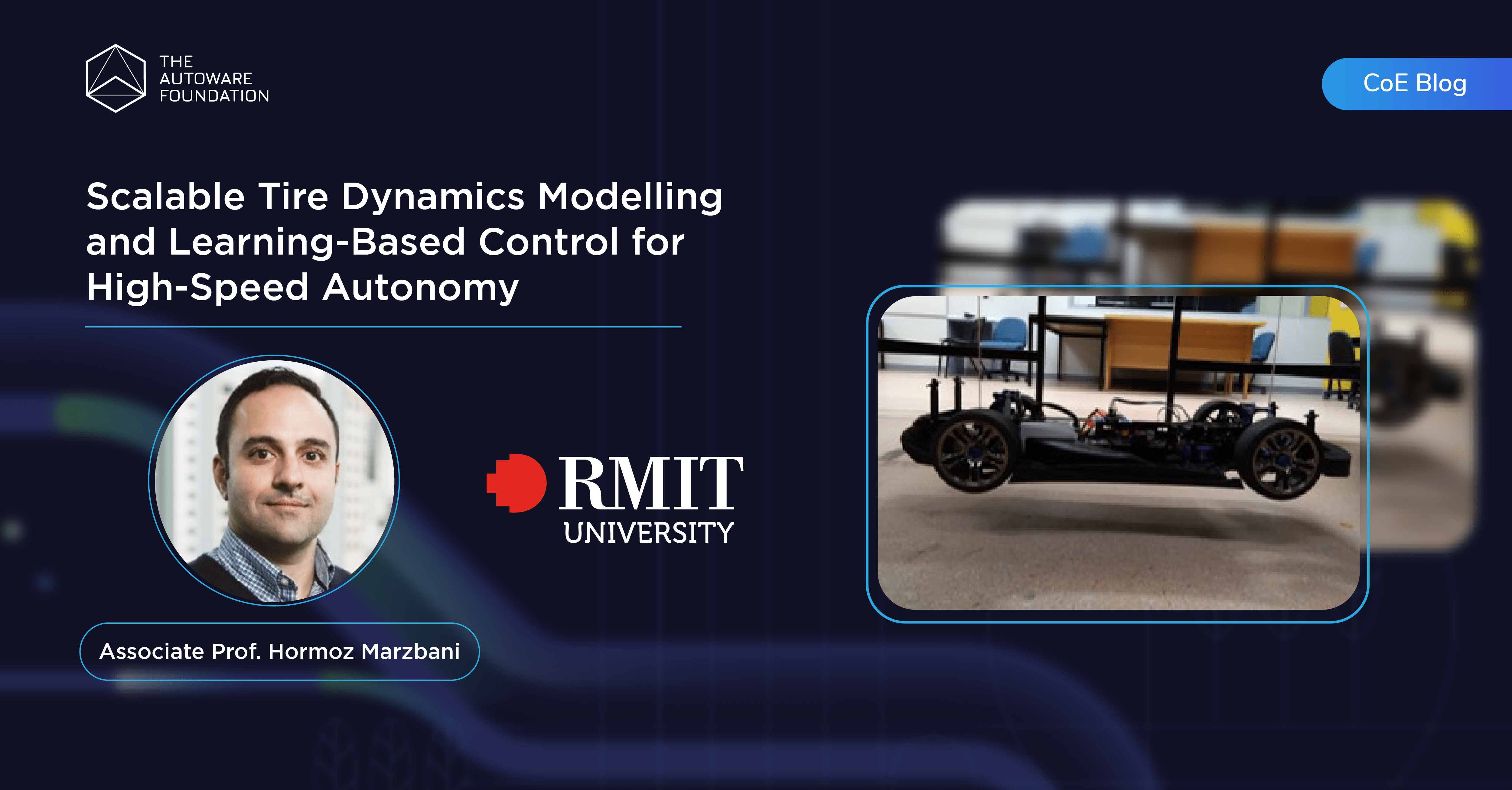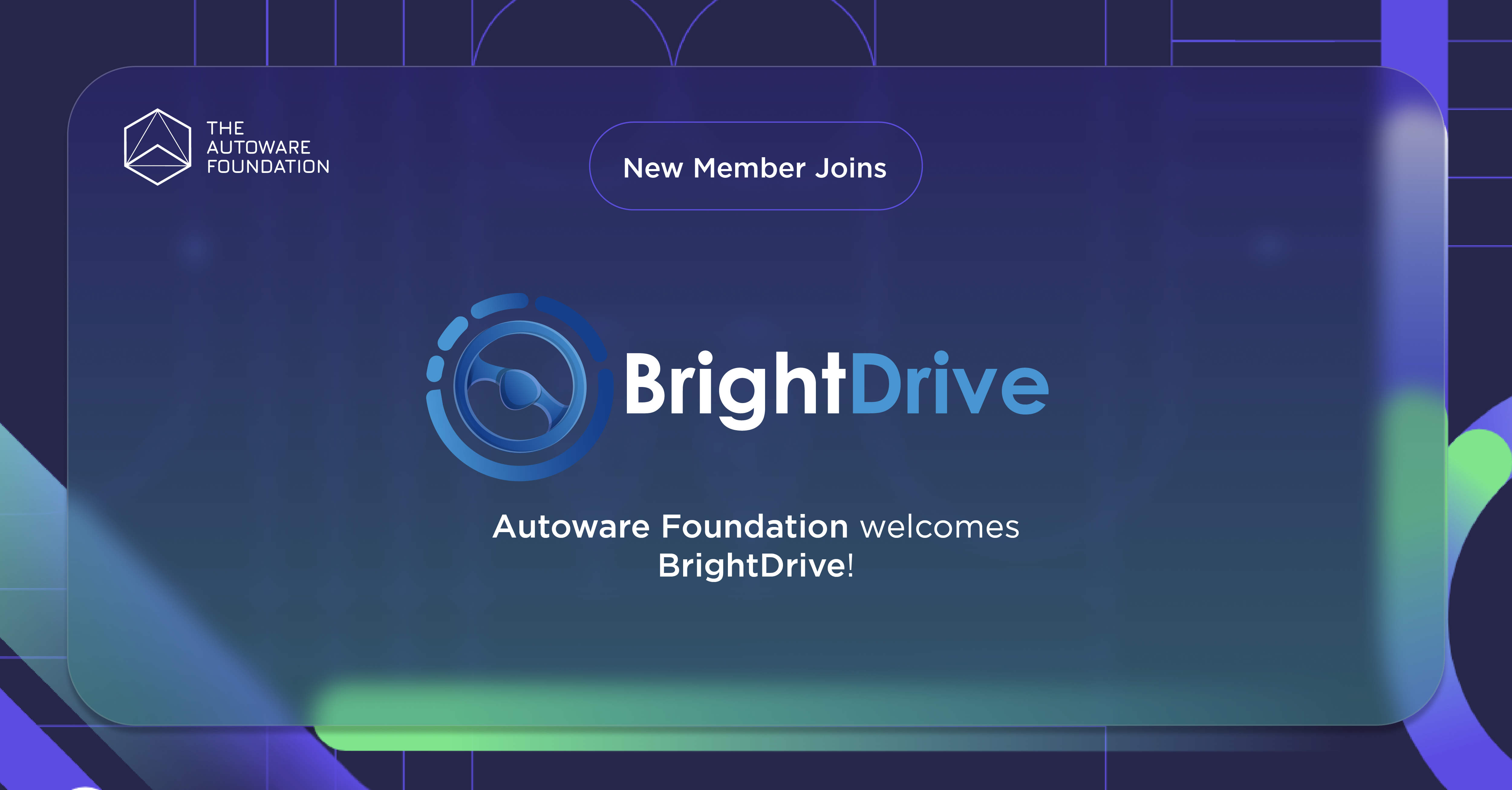
As part of the Autoware Foundation Centre of Excellence, our team at RMIT University is developing a new control capability for high-speed autonomous vehicles by integrating real-time tire modelling with advanced learning-based trajectory optimization. The core innovations—a cornering stiffness estimation module and a Safe Information-Theoretic MPC (SIT-LMPC) controller—will be tested on a 1:7 scale autonomous car with realistic tires, capable of performing aggressive manoeuvres.
This work expands the boundaries of what Autoware can do, enabling deployment in extreme scenarios—from autonomous racing to off-road or even extraterrestrial exploration.
Why Cornering Stiffness Matters
Tire cornering stiffness (𝐶α) is a critical parameter in lateral vehicle dynamics. It relates lateral force (𝐹y) to the slip angle (α) and underpins every aspect of handling and stability control.
We define the lateral forces at the front and rear axles as:

Assuming identical tires and steady-state conditions:

Where:
- m is the vehicle mass
- l = a1 + a2 is the wheelbase
- a1 and a2 are distances from the CoG to front/rear axles
- αf and αr are slip angles for front/rear tires
- g is gravitational acceleration
From these, the total lateral force and yaw moment are:

These feed into the planar dynamics:

This model reveals how changes in 𝐶α—due to tire wear, surface change, or temperature—directly impact stability and control. Estimating it online gives us a safer, smarter vehicle.
Scalable Implementation on a 1:7 Autonomous Vehicle
To validate this architecture in a controlled, cost-effective way, we are developing a 1:7 scale autonomous race vehicle with:
- Real pneumatic tires
- High-fidelity sensors and onboard computer (Jetson Orin)
- Autoware software stack with our added modules
This mini-vehicle will operate at speeds and accelerations sufficient to invoke measurable slip, making it ideal for identifying tire parameters and validating SIT-LMPC in realistic conditions.
SIT-LMPC: Learning to Control Aggressively but Safely
Autonomous vehicles often operate in uncertain environments. We address this with Safe Information-Theoretic Learning MPC (SIT-LMPC), which blends:
- Sampling-based MPC (MPPI) for stochastic optimization
- Normalizing flows to learn the cost-to-go function across iterations
- Constraint-safe learning using adaptive penalty methods
Mathematically, we cast the infinite-horizon stochastic control problem as:

The SIT-LMPC approach iteratively builds safe sets Sℓ and learns V(x), the expected cost-to-go, using previously feasible trajectories. These are incorporated into a constrained MPC formulation solved by optimizing:

Where dX(.) and dS(.) measure constraint violations and are penalized adaptively. All computations are GPU-accelerated, supporting real-time control even with high-dimensional models.
Contributions to Autoware
Our project contributes to the Autoware ecosystem by:
- Adding a modular cornering stiffness estimator node, usable across scales and vehicle types
- Demonstrating SIT-LMPC integration with Autoware for real-time stochastic control
- Deploying a scalable testbed, allowing other researchers to test slip-aware control in affordable settings
These additions make Autoware suitable for racing, off-road, and extreme-terrain applications.
What’s Next
- Q3 2025: Validation on variable surfaces, terrain changes
- Q4 2025: Public release of Autoware-compatible modules and documentation
- 2026: Potential scale-up to full-size off-road vehicle deployments
We welcome collaboration—especially around data sharing, experimental validation, or deploying on similar testbeds.


